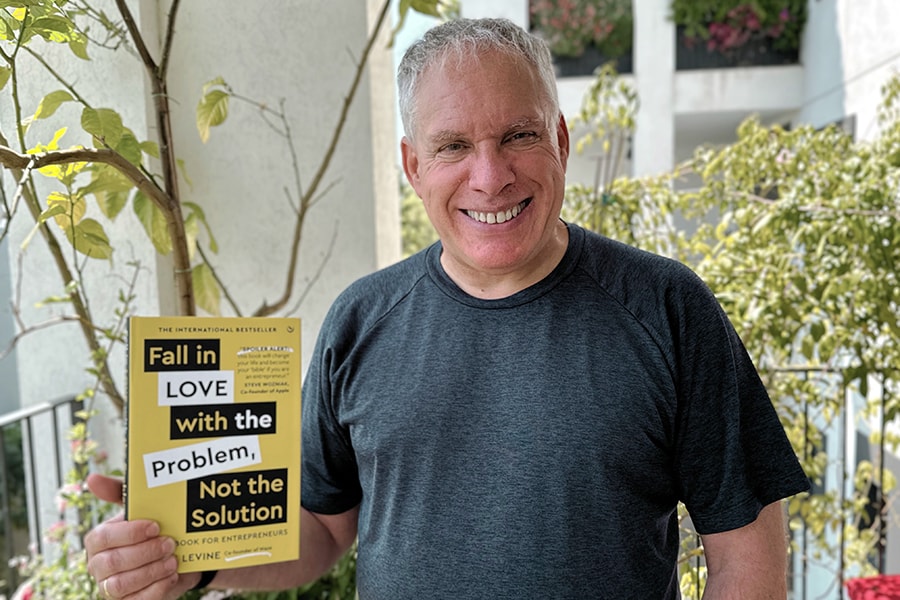It's more important to fire fast than to hire right: Uri Levine
Levine, a two-time unicorn builder and co-founder of Waze, explains why entrepreneurs should start by thinking of a 'big' problem worth solving
 Uri Levine, Author and Co-founder of Waze
Uri Levine, Author and Co-founder of Waze
Uri Levine is a two-time unicorn builder and co-founder of Waze is also a former investor and board member in Moovit. He has authored Fall In Love With The Problem, Not The Solution: A Handbook for Entrepreneurs. In an interview with Forbes India, he touches upon multiple aspects of the entrepreneurial journey—identifying consumers’ biggest problems, failing fast, raising funds, finding product-market fit, disrupting inefficient markets, and so on. Edited excerpts:
Q. Why should we fall in love with a ‘problem’?
The entrepreneurial journey is about value creation, and the simplest way to create value is to solve a problem. But there is so much more to it. When you fall in love with the problem, it serves as the North Star of your journey and when you have a North Star, you make fewer deviations from your course and are more likely to be successful.
The last part, which is occasionally the most significant one, is that the story you tell about your startup to investors, users and other stakeholders will be much more compelling. Just imagine that, in 2007, I would have told people “I’m going to build an AI crowd-source-based navigation system”, everyone would say “Oh yeah, very interesting, but no one cares”. If I had said “I’m going to help you to avoid traffic jams” then people would care (as they did).
When your users or customers care about your journey, they want you to be successful and will help you get there. This is also why I called my book Fall in Love with the Problem, Not the Solution.
Q. How can we identify a problem worth pursuing?
Before embarking on an entrepreneurial journey, your pre-journey phase will be to validate the problem. A true problem worth solving will resonate immediately, and people will start telling you about their experience with that problem. If your audience can't grasp the issue within seconds of your explanation, it's likely not their problem to begin with. Therefore, speak with 100 people to get their perception of the problem.
Q. How crucial is it to figure out product-market fit?
Product Market Fit (PMF) means that you create value to your users or customers. If you don’t figure out PMF, you will die.
I want you to think of all the apps you are using every day, from using Waze, through searching Google, or WhatsApp, and ask yourself, what’s the difference between any of those today and the first time you have used it. The answer is simple: There is no difference. So, once a company figures out PMF, which is the value that they create to their customers, they don’t change that anymore. What we don’t know is how long it took them to get there, because before they have reached PMF, we never heard of them. The answer is years. It is a long journey to figure out thevalue creation.
PMF has one metric—retention. It is very simple, if you create value, they will come back. If they are not coming back, you are not creating value.
Q. What makes Israel a haven for entrepreneurs?
The journey of building a startup is a journey of failures. When you are trying to build something new, and even though you have the conviction that you know exactly what you are doing, the reality is that you don’t. So you keep on trying different things until you find one thing that does work. So, the reality is that if you are afraid to fail, you already failed. Albert Einstein used to say that if you haven’t failed, it is because you haven't tried anything new before. If you are going to try new things, you will fail. The other immediate conclusion of that is that you need to fail fast.
I think failure is received differently in Israel. We are encouraged to try things and fail. The media, government, and tech ecosystem, all accept failure and see it as a lesson.
Q. What’s your perception of India’s startup ecosystem?
There are four cornerstones for a successful startup ecosystem:
- Entrepreneurs—who are driven mostly by a lower level of fear of failures
- Investors—how easy it is to invest in a startup in the ecosystem
- Engineers—availability of good and many engineers (quality and quantity)
- Experience—second-time entrepreneurs have a higher likelihood of being successful regardless of what happened on the first journey
Also read: 3 steps to work on entrepreneurial well-being
Q. Expanding too fast has been the bane of many startups in India too. What’s your advice in this regard?
If we measure PMF by retention as the only metric, then we shouldn’t expand before we figure out PMF, otherwise we will meet the revolving doors syndrome, which brings more users or customers while losing the existing ones.
Q. Firing or hiring—where should the focus lie?
‘Firing and Hiring’ is the name of chapter 6 in my book, and no, I didn’t get it in reverse; it is more important to fire fast than to hire right. Firing is a hard decision; hiring is an easy one.
Firing is hard for a few reasons: Because we are good people (or want to think of ourselves as good people), and firing may be harmful to the person we fire. It is hard because we just hired this person, it was a lengthy process, and we don’t want to go over it again. The last reason is that by firing a team member, you admit that you were wrong in hiring them in the first place. Now, this is an opportunity to establish the right DNA for the company–one that says clearly, “It is okay to make mistakes as long as we fix them fast”.
The real reason for firing fast is impact. Everyone knows if there is someone who should not be there. So, if you fire that person, trust in the organisation and its leadership will increase, and as a result, commitment to the leadership and the company will increase as well.
I know that this is an anti-thesis to the Indian culture. Most companies are not good at firing because we care—but the reality is simpler. If you really care, you should let them go, they are already set on a trajectory of not being successful, and they deserve to have a chance to be successful. By letting them go, you provide them with this opportunity.
Q. Three fundraising tips…
It takes a very short period of time (occasionally seconds) for an investor to set the first impression, and then perhaps a few more minutes to let that first impression solidify or to change it. Therefore, you should start with the strongest point in your story, because otherwise, by the time you will get there, it may be irrelevant. When I have asked investors why they decided to invest in this startup or that startup, I have heard two and only two answers, “I liked the CEO and I liked the story.” If this is the case, then the CEO needs to go alone to the first meeting so they can shine and they need to learn how to tell a good story. It is a different ball game once your product is ready. You are likely to close about 1/3 of all leads, so 1 out of 3 meetings will end up with a customer.
In fundraising, it is a different ball game. A partner at a venture capital fund is likely to meet one hundred to two hundred startups per year and invest only in one or two, which makes it about a 1 percent chance for a positive outcome. This is why your pitch should be short, and contain the main messages and information the investor may be interested in.
Q. When should one say ‘yes’ to an exit offer?
Consider three factors:
- Is this going to be a life-changing event? If it is, then think about the alternative more positively. If not, keep on building value.
- Is this going to be a life-changing event for the team who have built it? If it is, then think about the deal even more favourably. If it isn’t, then you still have a chance to negotiate a better deal for them.
- Is your company once in a lifetime for you, or you already have an idea of your next startup? If you are ready to move on, then move on.

















